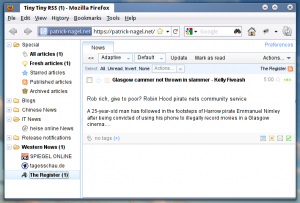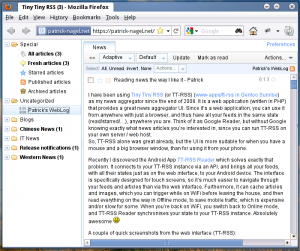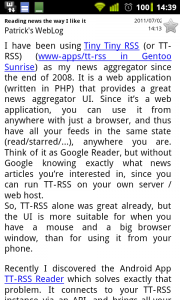I have blogged about TT-RSS just recently. And when Andrew Dolgov, TT-RSS’s initiator and main contributor released version 1.5.5, I thought I’d try to improve the ebuild a bit, given that it is in Portage now.
So I added a ‘daemon’ USE flag, which makes it easy for Gentoo users to get TT-RSS to update the RSS feeds. When you emerge www-apps/tt-rss with USE=daemon, it will now install an init script to start the ‘ttrssd’ daemon (or multiple, if you have multiple TT-RSS instances on your host). This is the preferred way to keep the feeds updated, according to TT-RSS’s documentation.
So, if you need a great, centralised (i.e. synchronised state amongst your computers, phones, etc.) news aggregator that runs on your own server / web host, give tt-rss a try! And if you’re a Gentoo user, I’d appreciate if you could test the new ebuild’s features (USE=daemon), and give feedback here or open a bug report if there is anything that could be improved further.





